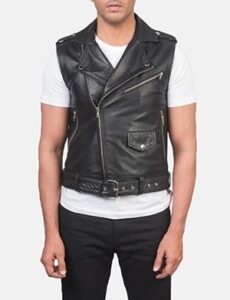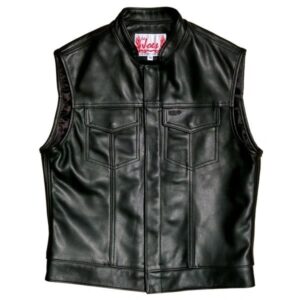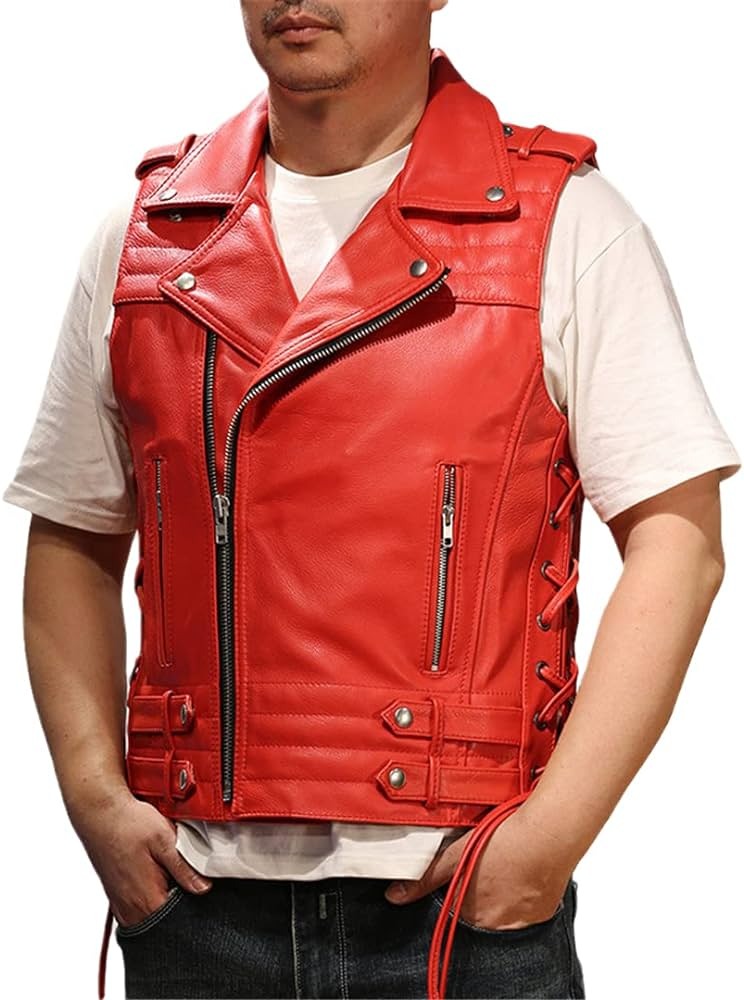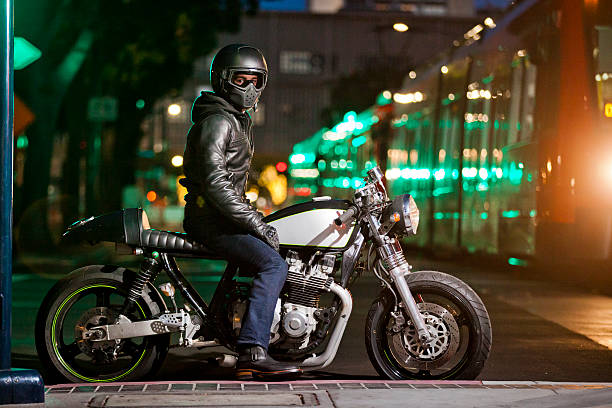The Real Cost of Leather: Ethics and Options
The real leather motorcycle vest is a famous fashion accessory due to its rustic charm and timeless look. However, their appeal hides a deeper story of ethics, environmental damage, and the search for sustainable alternatives. This story helps explain the expense of genuine leather, a traditional but controversial material.

For generations, leather has symbolized richness and durability. Its route from rawhide to the final product shows our inventiveness and ability to oversee ethical and environmental impacts. Leather production requires a lot of water, chemicals, and animal welfare. Leather manufacture raises moral issues. It involves killing animals for human use, a practice increasingly questioned in our changing ethical landscape.
Leather’s environmental impact goes beyond production. Tanneries, where hides are turned into leather, employ dangerous chemicals like chromium, which can leach into waterways and damage the environment. This pollution harms aquatic life and the populations around such facilities, especially in poorer areas with inadequate environmental standards. These environmental implications force a reevaluation of leather’s role in a society concerned with sustainability and the world.
Alternatives to genuine leather are becoming more popular as awareness grows. Materials science innovations have created many leather replacements, each with pros and cons. Polyurethane (PU) and polyvinyl chloride (PVC) are cruelty-free leather alternatives that look like genuine leather. Their environmental impact is questioned because of petroleum production. However, recycling and plant-based polymers address these issues and push synthetic leather’s limits.
Biofabrication offers ethical and sustainable leather alternatives. Companies are creating leather in labs from animal cells, eliminating livestock rearing and minimizing environmental impact. This developed leather represents a future where ethics and fashion coexist. Plant-based leathers derived from pineapple leaves, mushroom mycelium, and cactus are also overcoming the problems of traditional leather and petroleum-based synthetics. These materials use agricultural waste and limit animal product use, creating a circular economy.
The genuine vs. fake leather argument involves ethics, sustainability, and practicality. Each solution has trade-offs, from production environmental impact to product durability and aesthetics. Consumers must now choose between traditional leather, with its proven quality and heritage, and novel materials that promise a more sustainable and ethical future.
Leading fashion designers and industry figures shape ethical and sustainable practices. Using alternative materials, they might disrupt the established quo and redefine luxury for modern concerns. The fashion industry must work together to produce ethical and environmentally friendly materials without compromising quality or aesthetics.
Consumer education about their choices is critical to creating demand for sustainable alternatives. Consumers can choose ethical fashion choices that reflect their concerns for animal welfare, environmental health, and social responsibility with supplier chain transparency, certifications, and labeling. Awareness increases the possibility for considerable change, driven by consumer demand and industry innovation.
Natural leather’s genuine cost includes ethical difficulties, environmental considerations, and the quest for alternatives. As we move forward, we must balance tradition, innovation, luxury, responsibility, and style with sustainability. Each move toward a more ethical and sustainable approach to leather and its alternatives promises a fashion business that values our heritage and our responsibility to the world and its inhabitants.

Fakes: How to Spot Genuine Leather Vests
A genuine leather motorcycle vest is unrivaled in motorcycle clothing. It represents style, revolt, and heritage, as well as apparel. However, it can be difficult to differentiate genuine leather from faux with so many imitations and synthetics. This complexity goes beyond looks to include leather properties, craftsmanship, and the intricacies distinguishing true from counterfeit.
Leather’s natural properties are hard to imitate in synthetics. Unique texture, scent, and aging process indicate genuineness. Faux leather smells chemical or plastic, but genuine leather smells rich and earthy. This scent, frequently missed, is a clear sign of genuine leather.
Texture provides more information. Genuine leather has an irregular, diverse grain pattern, indicating its natural origins. Despite their beauty, faux leathers lack the depth and character of genuine leather. A leather vest’s grain and texture affect its appearance, durability, and wear.
Another hint is the material’s edges. Due to its biological nature, genuine leather has rougher edges. The crisp, neatly carved edges of synthetic textiles betray their machine-made origins. Synthetics cannot match the patina that genuine leather develops over time, adding character to its edges.
The material’s flexibility and manipulation also indicate authenticity. Natural leather softens and becomes more comfortable with use. Synthetic materials lack weight and flexibility. Advanced imitation leathers can mimic its suppleness but rarely match its comfort and versatility.
Another indicator is leather pores. These pores will vary in size and distribution in genuine leather, reflecting the animal’s skin growth. Synthetic leathers frequently have too flawless a pattern to recreate this randomness.
Water absorption tests are also informative. Genuine leather gently absorbs water and darkens before drying. Due to its plastic structure, faux leather repels water and collects droplets. This easy technique can help determine authenticity, but more is needed.
Though not perfect, price and circumstance can indicate their genuineness due to their production costs and labor; genuine leather costs more. A vest that seems overly cheap may be made of poor materials. Price alone should not be the only factor, as specific high-quality imitations can be priced like genuine leather to deceive consumers.
Labels and branding are vital yet easiest to fake. Authentic items usually list the leather kind, provenance, and care instructions. Craftsmanship-focused brands give authenticity assurances. Label spelling, font, and quality might be red signs for counterfeiters.

Understanding the leather’s origin might reveal its authenticity. Genuine leather from various places or with specific properties can be identified because Italian leather is so high quality that producers like to showcase its origin.
Finally, the vest’s craftsmanship is impressive. From cutting to stitching to finishing, genuine leather demands experienced craftspeople. The stitching, panel alignment, and edge finish show the attention to detail of genuine leather products. Mass-produced faux leather vests may have uneven stitching, misaligned designs, or glue instead of sewing in vital locations.
Identifying a genuine leather motorbike vest requires skill and knowledge of the material’s properties. Tactile, olfactory, and experimental methods verify the vest’s authenticity. Consumers must be knowledgeable and discerning to navigate the genuine leather industry as counterfeiters become more proficient. Finding actual leather among a sea of imitations is about embracing genuine leather’s tradition, durability, and unique beauty.





Leave a Reply